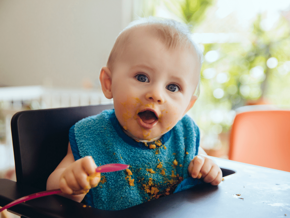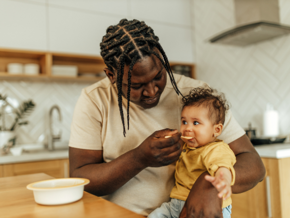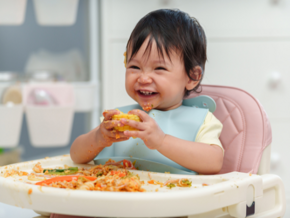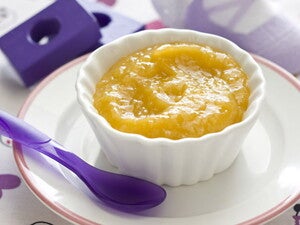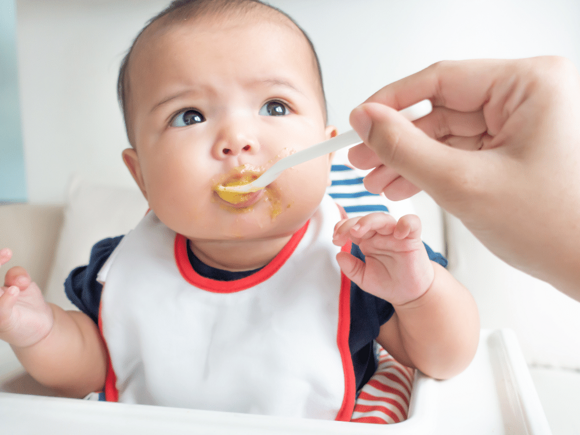
4-6 months
Article
Introducing Baby’s First Foods? Be Prepared With This Handy List
May 23, 2022
3 mins
We have put together a handy list of our top 10 first-food essential items for babies starting solids.
Our top 10 essentials for first foods
- If you decide to start with purees, a food processor or blender can make things a lot easier. Hand-held mashers and sieves are also good for purees—and they’ll give you a work-out!
- Plastic bowls suitable for the dishwasher, microwave, and freezer. The ones with suction cups on the bottom can be useful for the bowl and food-throwing phase.
- Small, smooth, round-tipped soft reusable spoons—these are gentle on your baby’s delicate mouth and gums. If wanting baby to practice self-feeding, you may want to choose ones with short and fat handles for easier grip. For the tech fans, you can get spoons that change color if the food is too hot, although you should still always double check the temperature first.
- Washable bibs or ponchos can help cut down on outfit changes. Feeding is messy—babies like to play with food, it’s all part of the fun. You can also get messy mats or a shower curtain to put under the highchair, which are not essential, but if your baby is fond of throwing food, you may be thankful for one of these.
- Cloth washers are handy to wipe up messy faces—buy a few though to rotate through the laundry.
- Ice cube trays to freeze portions of purees and freezer bags to store the cubes—great for batch cooking. Be sure to label each bag so you know what it is and when you should throw it out.
- Baby cup, sippy or straw cup. Introducing an open cup to your baby early on is a great way for them to practice. Even with only a small amount of water. Be prepared for little spillages.
- Baby bowls with tight fitting lids and reusable baby food pouches to fill with your own homemade purees are great when you’re on the go with baby.
- Baby highchair—look for one with strong straps, is easy to put away, has easy to clean removable trays, covers, and cushions, and adjustable height settings for when your baby grows. You might also like a baby booster seat for when your baby is older or when you’re travelling, a baby booster seat ties to your own chairs meaning you can enjoy mealtimes together. There are loads of high-quality, barely used highchairs and booster seats on local Facebook groups if you want to try second hand.
- A feeding schedule stuck on the fridge to track what your baby has tried, and how often. It can sometimes take 10-12 tries for your baby to get used to a new flavour, so don’t give up.
There are so many high-tech gadgets and ‘mess saving’ items available to new parents – many more than the list above. We would recommend starting off with the basics and building from there, depending on how your baby is progressing, your style of feeding and your concerns for your walls and floors!
Now you’ve got the essentials, read our checklist on how and when to start complementary feeding.

